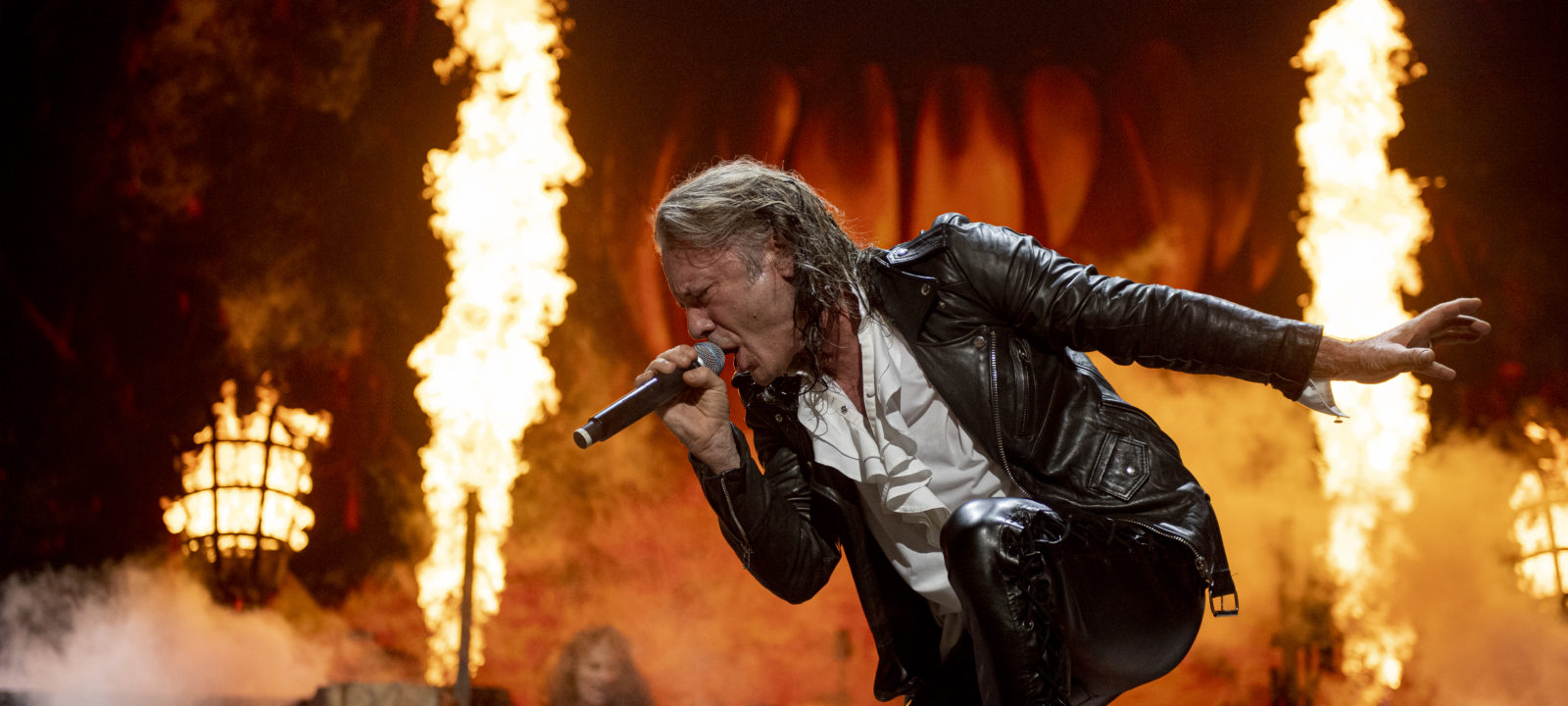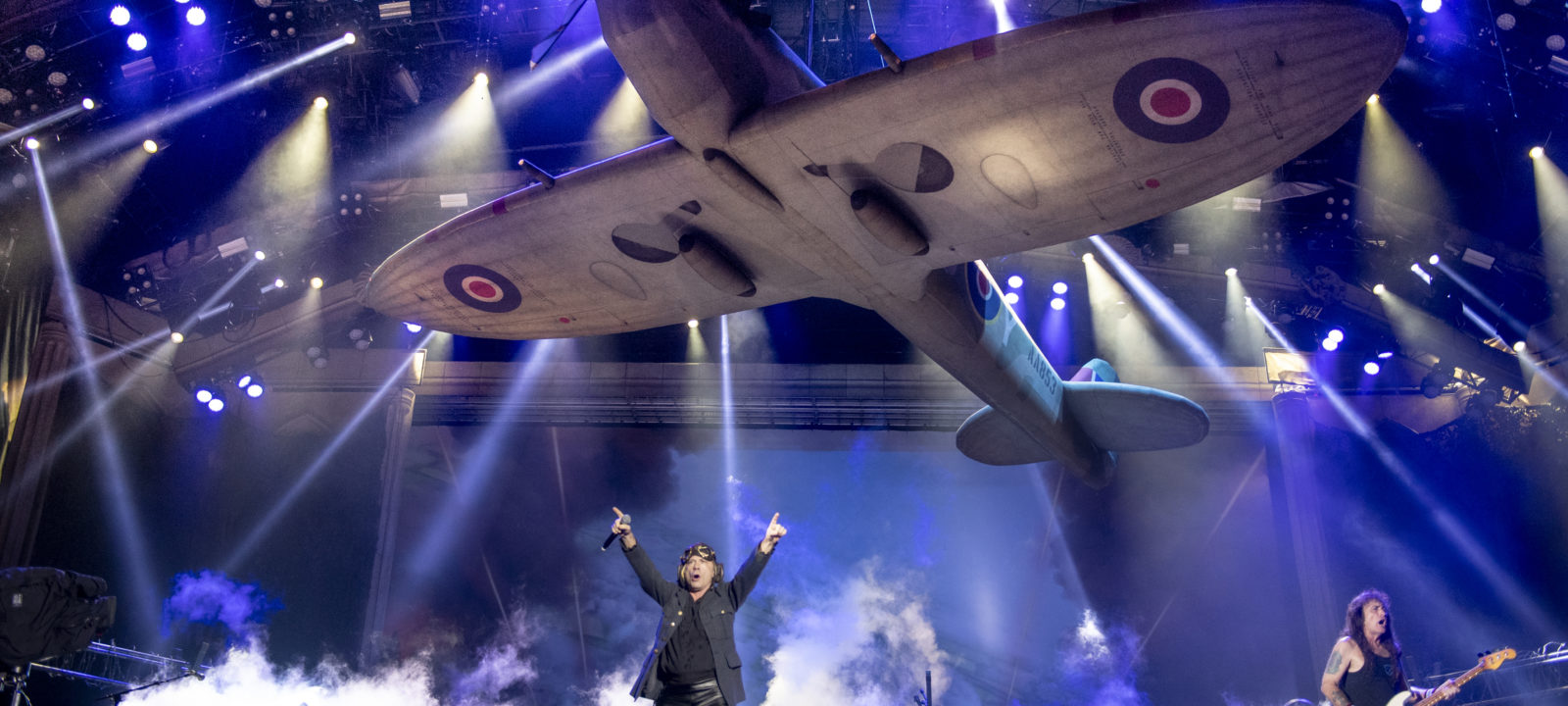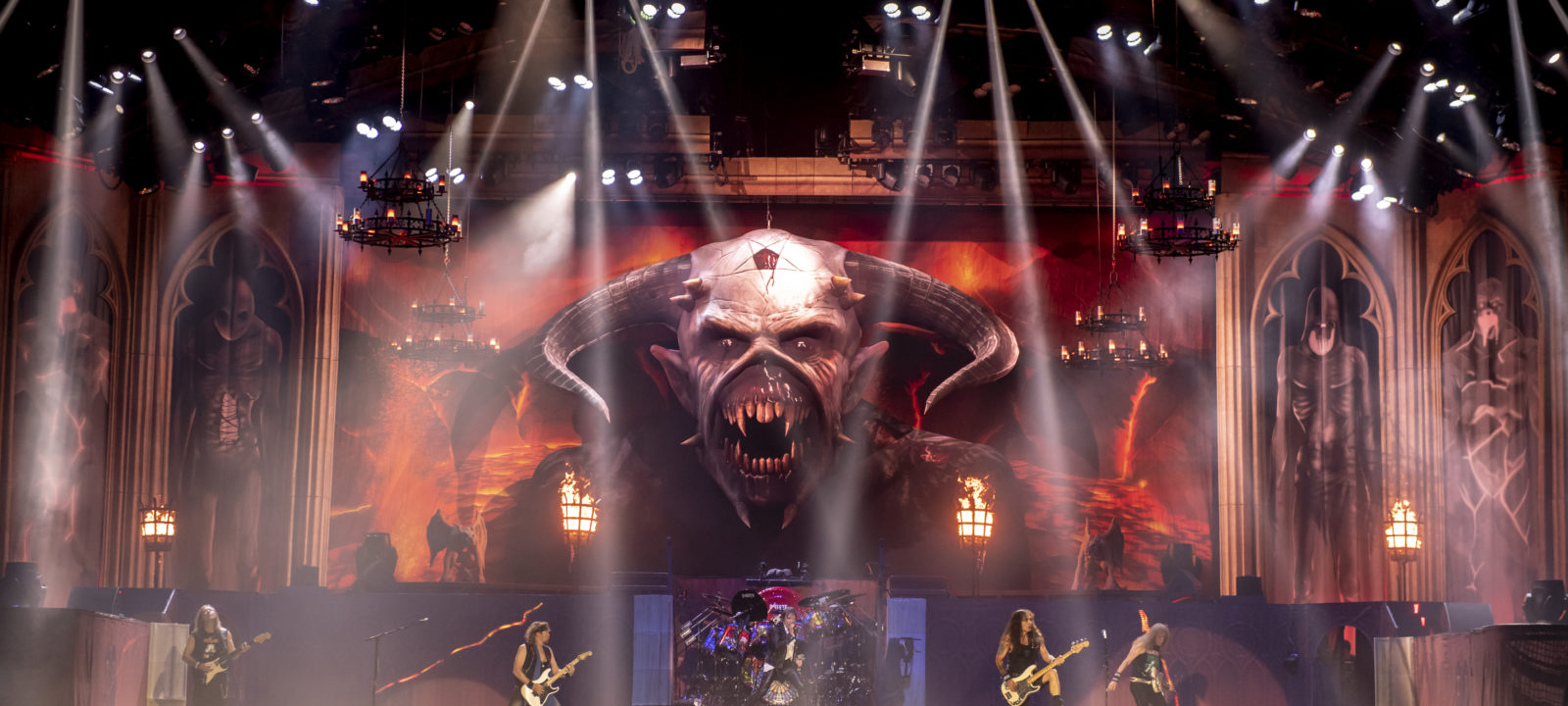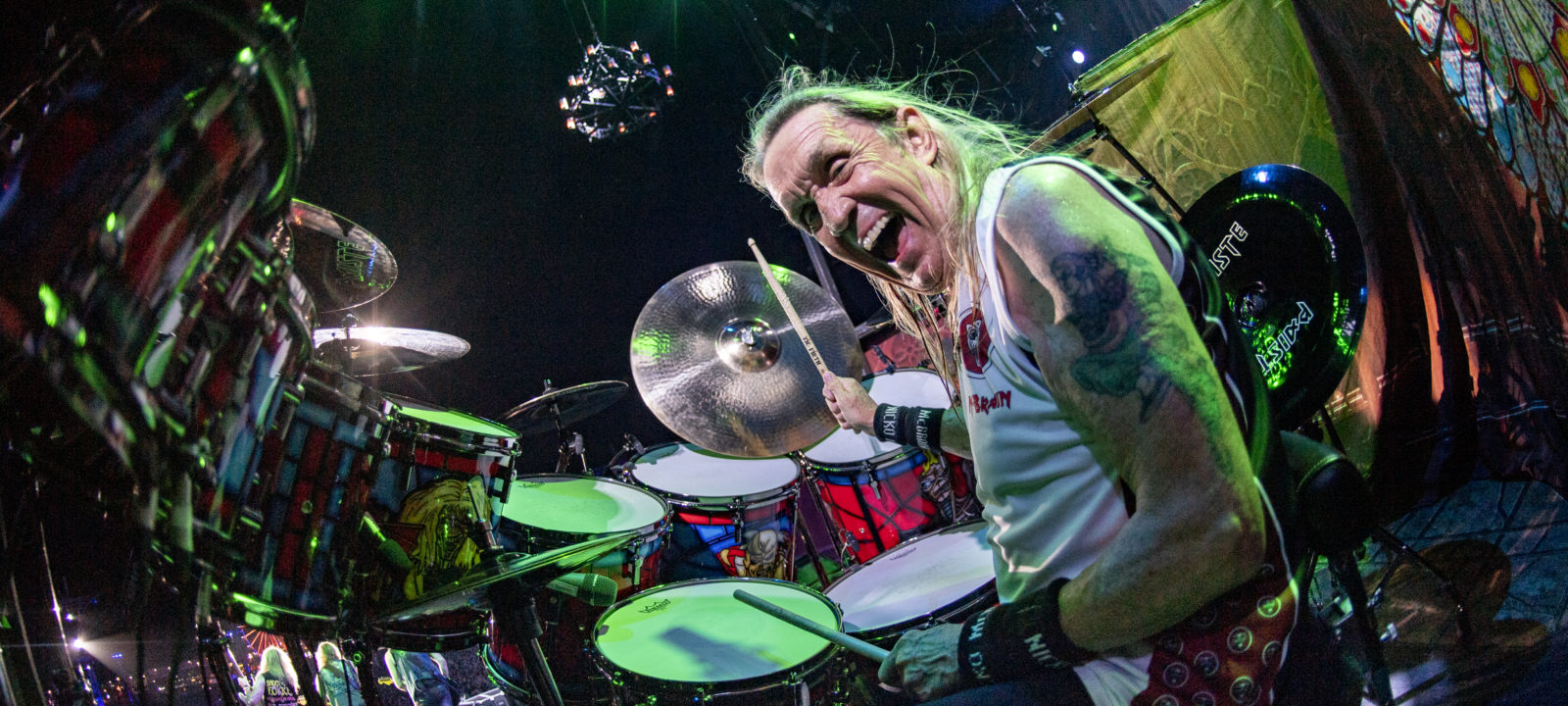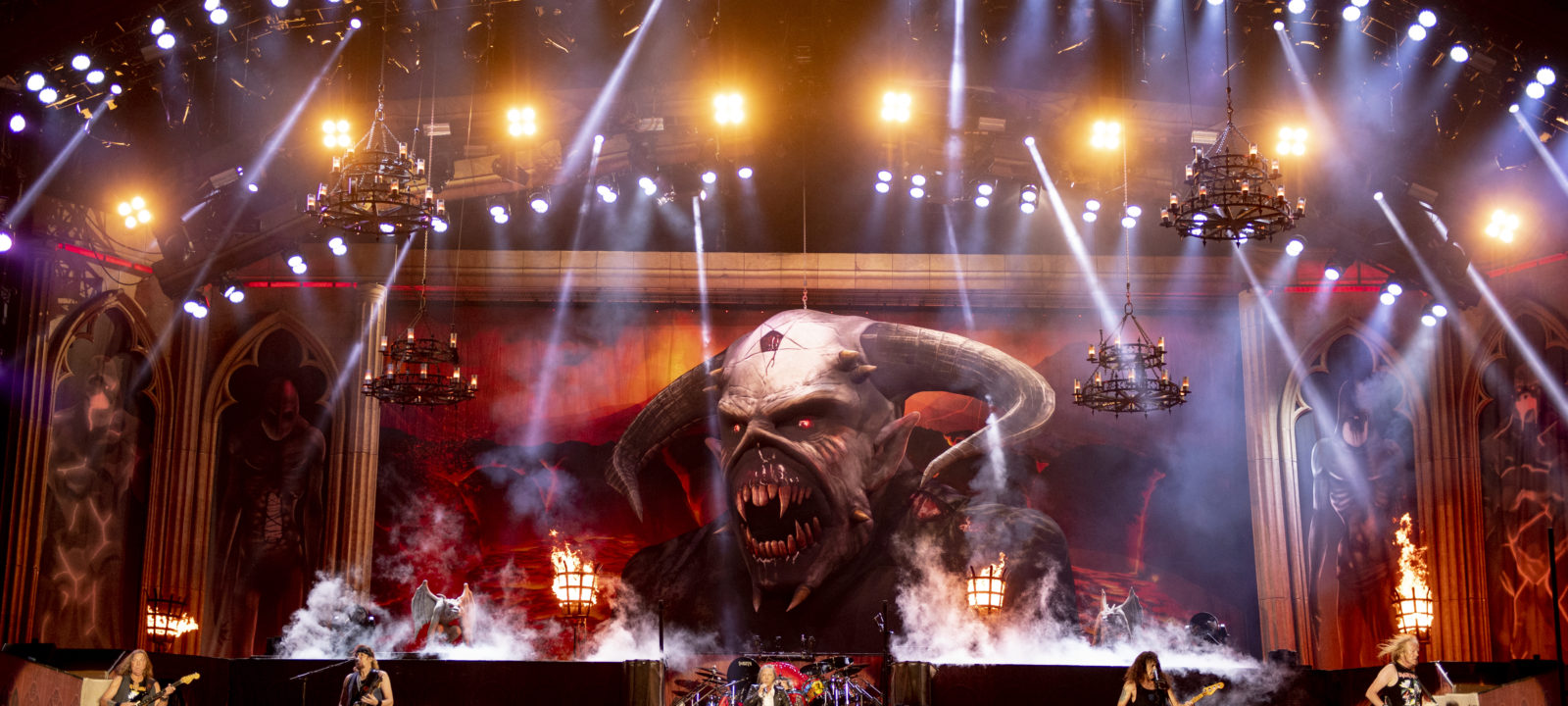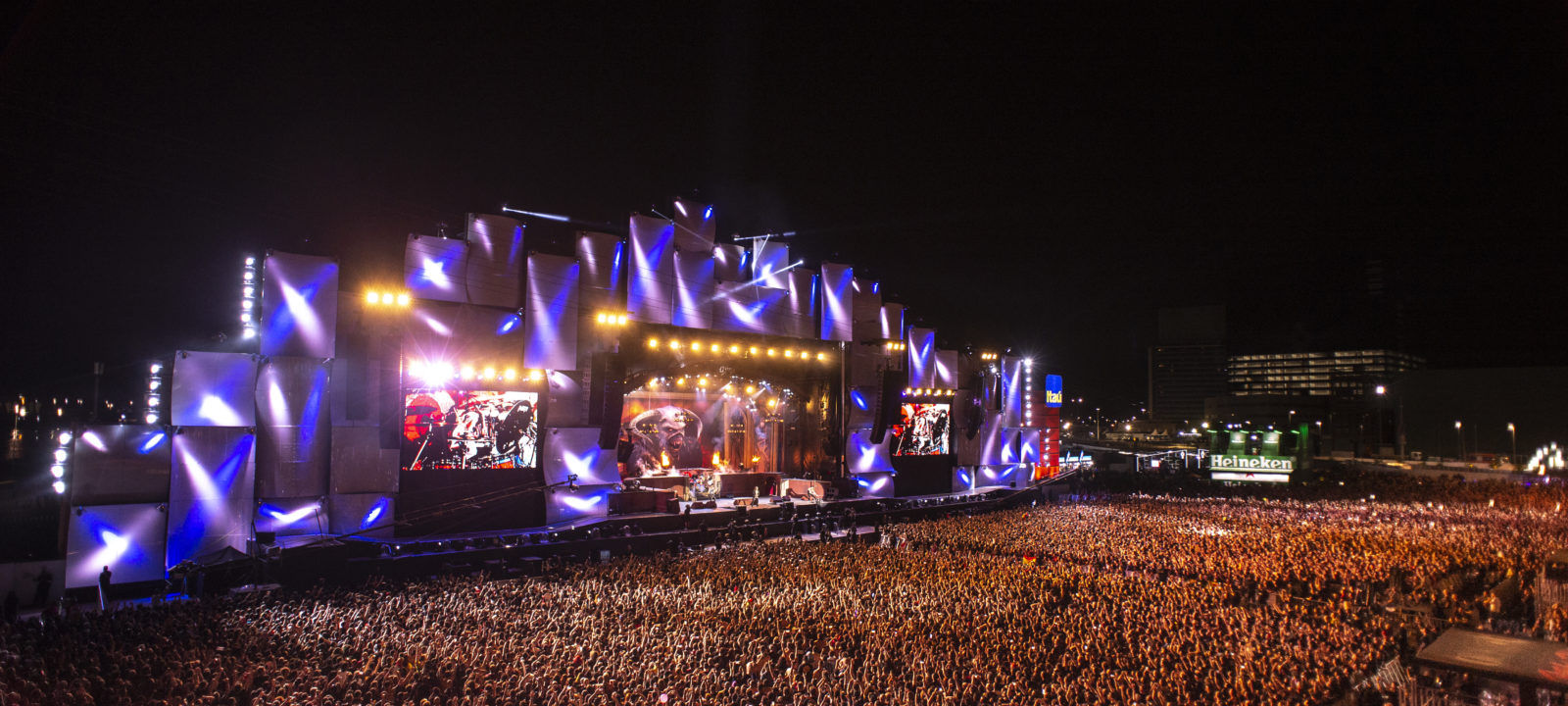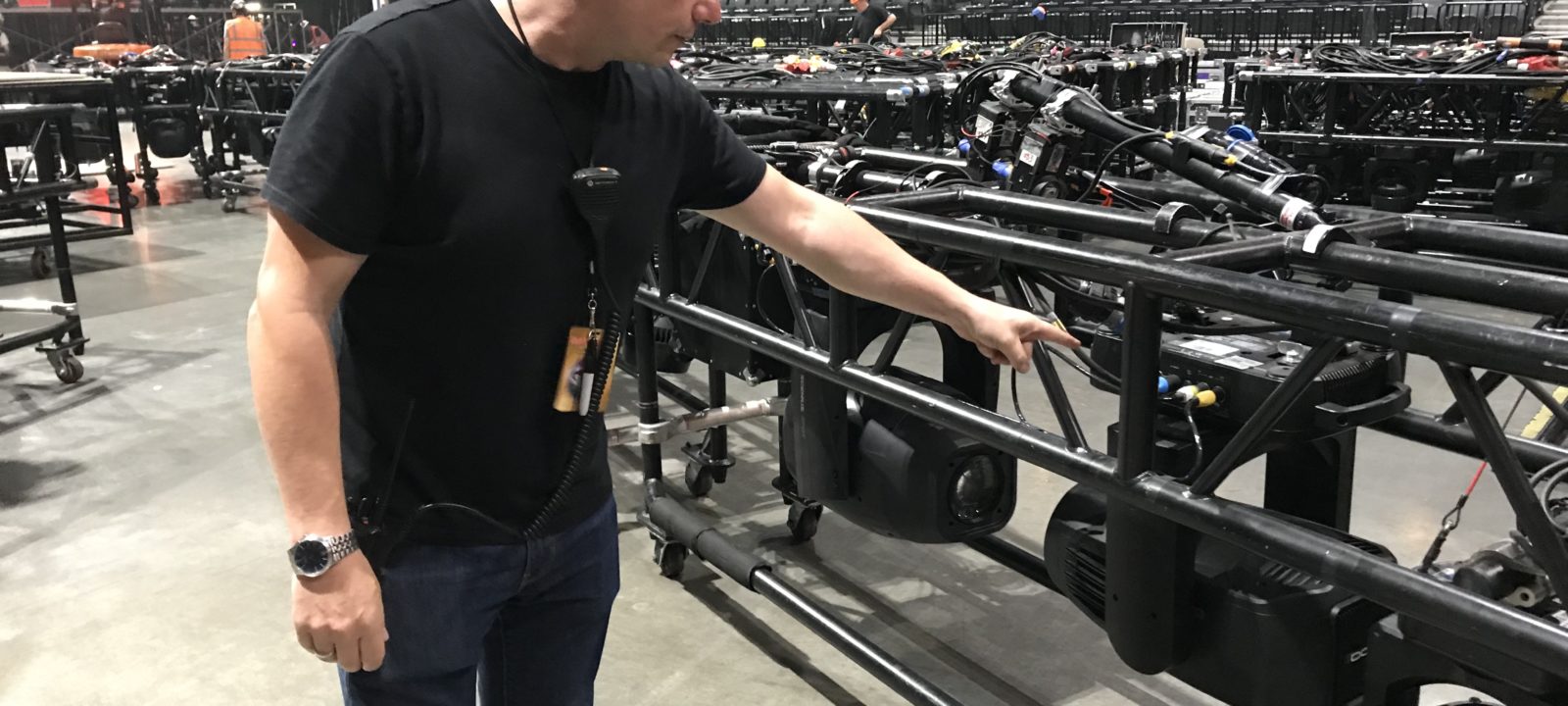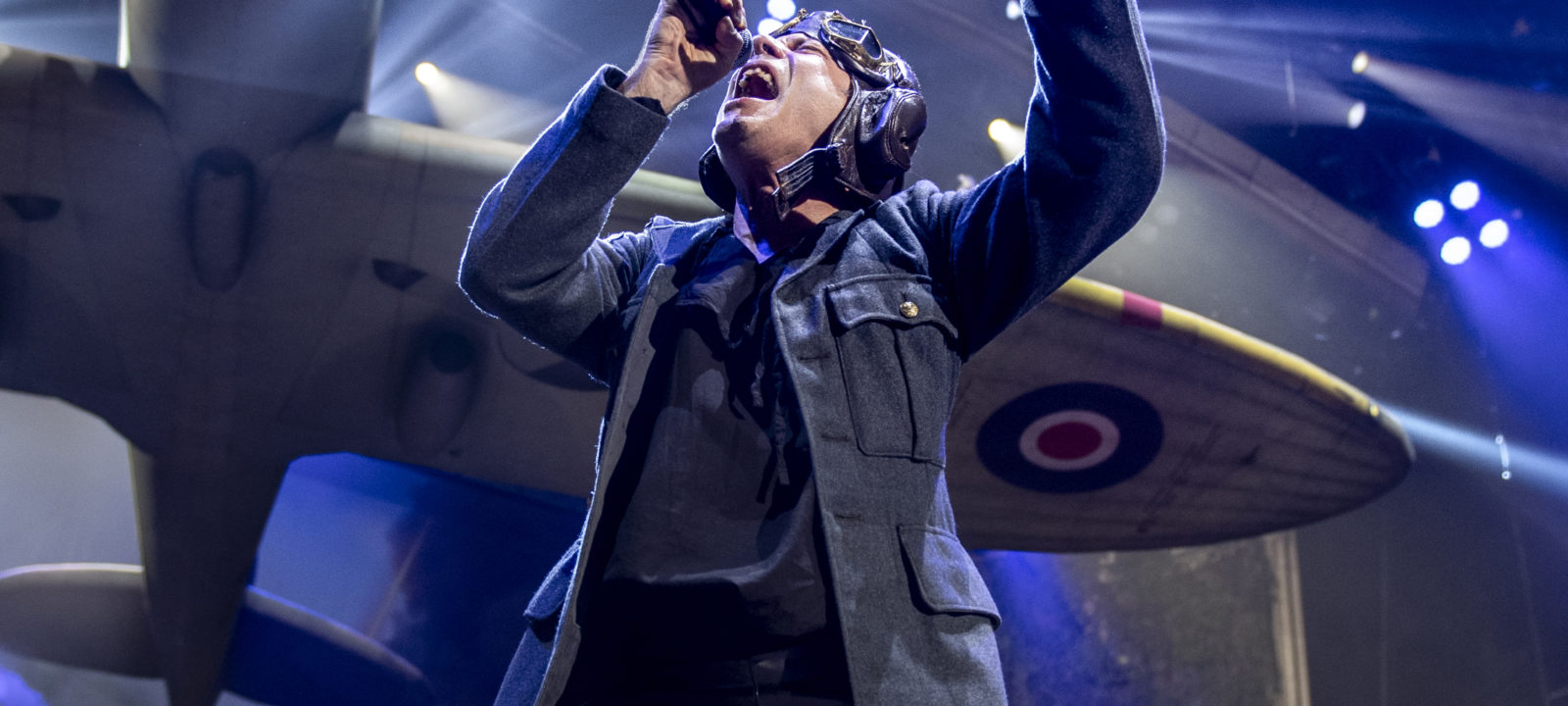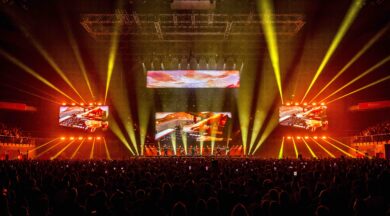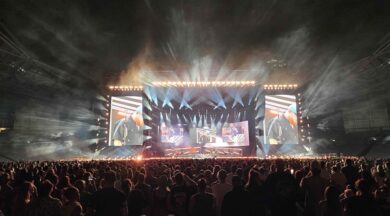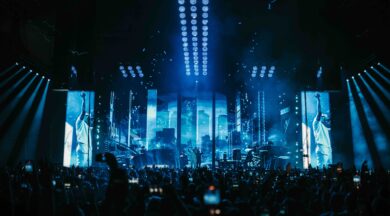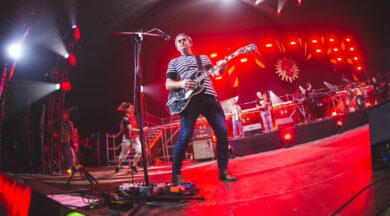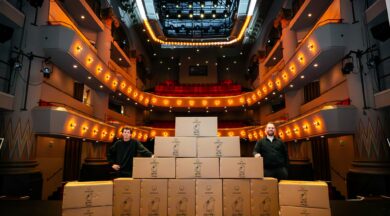IRON MAIDEN News from the Picturedesk
Ayrton was proud to be featured recently in an excellent blog by IRON MAIDEN’s official photographer John McMurtrie. John is an accomplished freelance Music, Stage & Tour Photographer who has accompanied IRON MAIDEN on multiple world tours. His blog gives us an insight into the photographer’s challenges and how his job was made so much easier by the quality of light produced by our BORA fixtures. It’s not just the lighting designer, audience and artists who are affected by the lighting! You can discover why in John’s words:
John McMurtrie
LED lighting has been the bane of every music photographer’s life for the last decade, but there is a light (literally) at the end of the tunnel – which may just solve everyone’s problems for good!
When I began my journey into music photography I was shooting transparency film. You had the option of either daylight or tungsten film for balancing colour. Even though all the lighting was tungsten, the majority of gigs were shot using Daylight film because the over saturation of the tungsten light looked great! Occasionally at the big shows, bright follow spots would look a little warm so occasionally I would use tungsten film stock.
Most tungsten films looked too blue so were rarely a viable option. Out of nowhere back in 1992 the company 3M launched a tungsten balanced transparency film ‘SCOTCH CHROME 640-T’. It was ace for pushing to 1280 ISO with beautiful grain and had vibrant saturated colours but most importantly it was colour balanced for 3200k. In my mind I had cracked the problem of good colour balance at gigs. But the film was difficult to find and was rarely in-stock at most professional outlets.
Most of the time I was forced to use FUJI RHP 400 daylight film (PUSHED 1 to 2 STOPS) and for the majority of shoots it was great. When I finally made the leap to digital in 2006, the in-camera colour balance appeared to be the answer to every photographer’s prayers. It was (and is) brilliant. Suddenly every gig picture had perfect colour, as long as you were shooting RAW. Follow spot lighting looked clean and the stage lights looked great. I still don’t like the way digital blows out hi-lights compared to the way film copes with bright lighting but it is a small sacrifice to have perfect colour balance.
Then I shot a small club show at the LA2 on Charing Cross, London around 2006 and that was my first introduction to LED lighting. The first few songs of the show were lit with a blueish light that looked great to the eye but in camera the screen was washed out blue. Every frame was hideously over exposed with no shadow detail. I under-exposed by 2 stops and I was able to confirm my focusing but hi-lights were still washed out. The lighting moved to RED and the same thing happened and I was only able to get a few good frames during the chorus of one song when the lighting became neutral for a few brief seconds. WTF? I got in touch with a friend who was a front of house lighting guy and asked him where all the old Parcan lights had gone?
LED is the the new thing he told me. Lighter, brighter, cooler and completely controllable from the desk. No more climbing up ladders and fitting coloured gels, the colour can be dialled in at any point during a show.
Before I get accused of being a Luddite I have to side with all the Lighting Directors and admit this tech is fantastic! It means you can light a show exactly the way you want it to look. Problem is you just can’t bloody photograph it! Not just stills, video is just as bad! It turns out LED had slowly been introduced over the last decade but I hadn’t noticed because I was still shooting with film.
For the last few years us music photographers have just had to deal with it. Mostly spending painstaking time in post production, dialling down individual saturation and luminosity and shifting colour balance until you get an image that is useable. Nothing like how the actual show looked but something you could ‘get away with’. A lot of photographers give up in frustration and simply flip to black & white. As each new camera model is launched I always hoped that Nikon could design a magic setting that could combat the curse of the LED but that would involve bending the laws of physics which is just impossible!
Modern DSLR cameras are able to record the visible light spectrum of roughly 400-700 nanometers – similar to the human eye. Modern LED device’s span the spectrum from just into ultraviolet (UV), through visible to infra-red (IR). There is a large amount of output from these lights – particularly the blue, red and especially magenta – that not only a digital camera is unable to record but also is inconceivable to the human eye! The colour blue sits within the ultraviolet area and red overlaps into Infra-Red. Where these colours overlap they cause a spike in colour saturation. So that is why your camera is unable to record bright red or blue colours with any real success! It doesn’t matter what tricks you may try, or how clever you are at editing RAW files.
The colour blue peaks around 400 nm giving massive blocks of just an opaque blue in the frame producing an ultraviolet magenta cast instead of the colour blue. Very surreal when you are looking at a very atmospheric ice cool stage set and your camera displays a burlesque pink wash. The same happens with red at 700 nm which causes a spike in saturation way beyond what the human eye really sees. There is so much of any one colour that the RGB CCD will just record 100% saturation and blow out all exposure and tonal information.
The effect is exaggerated when we are talking about spots of lights with areas with less saturated light. The camera can only expose for one, therefore either one area is under-exposed or another is over-saturated. The same applies when shooting with film but the massive amount of over-saturation (colour burn) doesn’t mean the image is unusable.
I have been fighting this battle for over a decade with little success. I have learnt a few tricks to combat the problem but when you are dealing with light in the ultraviolet and approaching infra-red there is nothing your camera can do to expose during parts of a show. It is a real shame as the stage lights look sensational. The audience and Lighting Director is totally oblivious to the nightmare the poor concert photographer is having trying to record their hard work!
I think there is a common misconception that the lighting guy (LD) sitting at the back is just hitting random buttons in time to the music. That may have been the case back in the 1960’s, but things have moved on somewhat since then. The modern lighting director is in complete control of literally hundreds of lights at once.
For the big shows it takes months of planning, digesting the bands set-list and the performers’ personal preferences to come up with a visual spectacular sometimes more complicated than any instrument being played. These days each individual light is programmed via computer using software that simulates the entire stage set in 3D where each and every light is tuned with total precision. Light output, colour, focusing and exact positions of hundreds of lights has to be programmed and planned and it takes a good LD weeks, sometime months to program. It is then tested during a production rehearsal and tweaked for hours on end, sometimes through the night whilst the band and crew are fast asleep.
So next time you watch a large stage show, spare a thought for the poor LD who has put their heart and soul into the spectacular show you see before you! It’s just a real shame the photographer is unable to record accurately what everyone else can see!
Until now…
Recently whilst shooting IRON MAIDEN’s breathtaking ‘Legacy of the Beast tour’ in North America, I was astounded at how easily I was able to photograph the stage show. July 2019 I had flown out to Ft lauderdale for the beginning of the tour and to photograph the production rehearsals. This is my opportunity to see the show and calibrate my camera and just see how difficult the show will be to photograph. From the first few test shots I noticed the colour saturation and exposure of the stage set was reproducing perfectly on my Nikon. The reds had beautiful saturation as did the blues. The massive Eddie surrounded by pyrotechnics is normally the hardest part of the show to shoot well but everything was perfectly colour balanced.
As I approached IRON MAIDEN’s LD Rob Coleman to congratulate him on the best lighting I have ever photographed I think he was prepared for my usual list of complaints and requests. Previous tours I have asked for saturation to be dialled down so I could record certain colours so I think it was a pleasant surprise for him to see me so happy! Rob has always been very accommodating with me and is a brilliant Lighting Designer. He has also always shown an interest in my photography and has often looked through my sets from various shows to look at how the light show looked. He explained why I was probably so happy!
It turns out there is a new LED beast in town called the ‘BORA’. This light has been specifically designed to improve reproduction for TV and film and they are also one of the most advanced stage lights available. Rob explained the lights use a series of mechanical colour wheels that physically move gels over a perfect 7000k white LED light. In laymen terms this is like an ‘old school’ Parcan light (albeit LED not Tungsten) with a coloured gel – instead of colours dialled into the LED light spectrum, the light mixes gels using 2 colour wheels.
The manufacturers also state they are virtually flicker free. It is a game changer for music photographers everywhere and hopefully the technology will catch on. Reds are no longer over-saturated and blues record without blocked out colour. The difference is literally like light and day and solves so many of the problems that videographers and photographers have had to contend with for so long!
Not every light on the ‘Legacy of the Beast tour’ was a Bora, so I still had some obstacles to overcome but for the majority of the tour I was able to just photograph the show without the worry of hours of colour correction in post production.
Here is the tech spec on the ‘BORA’ light made by Ayrton (https://www.ayrton.eu/produit/bora/)
The ‘BORA TC’ from AYRTON includes a CMY colour mixing system, which, combined with a variable CTO and two wheels with six complementary colours each, produces an infinite palette of vivid pastels and saturated colours. The framing section allows accurate positioning of four shutter blades which mechanically move coloured gels over a pure clean 7000k white light to produce impeccable colour reproduction for TV shows.
So it looks like a step in the right direction for every music Photographer and Videographer all over the world if these lights start to become the norm.
ALL IMAGES AND TEXT ARE COPYRIGHT JOHN McMURTRIE 2019. ALL RIGHTS RESERVED.
John McMurtrie is a Freelance Music, Stage & Tour Photographer.
He can be contacted at www.picturedesk.co.uk
Text: John McMurtrie
Photos: © John McMurtrie
